Schedule
Beans Crop Schedule
| Product Name | Fertilizers | |||||||||
|---|---|---|---|---|---|---|---|---|---|---|
| Poornima Kit | NPK Grow Caps |
Rhizo caps Fertilizer |
Humigrow Nano Powder |
Alp | Sonha-Bihan | IBP-Kit | Amavasya Kit | |||
| Nitrogen Fixing Bacteria |
Humic Acid | Chelated Multi-micronutrient |
PGP/PGR | |||||||
| Land Reparation | week -2 | |||||||||
| Soil Treatment | week -1 | 1 Kit | ||||||||
| Seed Sowing | week 0 | |||||||||
| Germination | week 1 | 1 Kit | ||||||||
| Vegetative Growth | week 2 | |||||||||
| week 3 | ||||||||||
| week 4 | ||||||||||
| week 5 | 1 Caps | 1 Caps | 120gm | |||||||
| Harvesting Flowering/ Fruiting/ |
week 6 | 250gm | 250gm | |||||||
| week 7 | ||||||||||
| week 8 | 1 Kit | |||||||||
| week 9 | 1 Caps | 1 Caps | 120gm | |||||||
| week 10 | ||||||||||
| week 11 | ||||||||||
| week 12 | ||||||||||
| Further will be repeated deepnding on the crop health, and weather conditions | ||||||||||
| Total Quantity | 1 Kit | 2 Caps | 2 Caps | 240gm | 250gm | 250gm | 1 Kit | 1 Kit | ||
| Broadcast | |
| Top Dressing | |
| Basal Dressing | |
| Soil Application | |
| Spray | |
| * | Optional |
NOTE: For the first year donot immidietaly substitute 100% chemical fertilizer with the SIESTO GREEN products, as the soil is used to chemical fertilizer, it may affect the output. So the best way to substitute is by reducing 50% of chemical input in the first year, 25% the following 2nd year, & then another 10% by the 3rd year. After the 3rd year use synthetic fertilizer / inorganic fertilizer if their is a requirement depending on the soil health.
CROP SCHEDULE FOR BEANS
| Sr. No. | Treatment / Application | Product | Dose /Acre | Application | Management |
|---|---|---|---|---|---|
| 1 | Vegetative – Dissolve in 20 to 200 ltr. of water as required for 1 acre of land and apply through Drip Irrigation or drench. | POORNIMA KIT | 1 Kit | Apply it in week 1. | It is a balanced form of nutrients that includes NPK, Zinc, Cropforce NP, Humigrow NP, and Mycorrhiza NP. |
| 2 | Vegetative – Mix all with the required amount of water and apply through drip irrigation, flood irrigation, or drenching as per farmer’s availability. | NPK + Rhizo + Humigrow | 1+1 Caps + 120gm | Apply it in week 5, and week 9. | It is a balanced form of Nutrition that includes NPK. |
| 3 | Flowering/ Fruiting – Mix both in 20 – 200 liters of water as per requirement and spray it in the plants. | ALP + Sonhabihan | 250gm + 250gm/ 200 lit. of water | Apply it in week 6 (When flowerings are seen) and further more if required | It is a Micronutrient and PGP that helps in Growth, Fruit set, and the quality of the produce. |
| 5 | Soil Treatment – Dissolve in 20lit. to 200lit. of water as per requirement for 1 acre of land and apply through drip irrigation or drench. | IBP KIT | 1 kit | Apply it as soil application before sowing | It prevents soil-born diseases and nematodes. Apply as per the soil health and soil-born diseases. |
| 6 | Vegetative and Flowering/ Fruiting – Mix all with the required amount of water and apply through foliar spray or drenching as per infestation of insect. | Amavasya kit | 1 kit | Apply it in week 8th | It is a balanced form of insecticides. Which include Traps, lifeline, Bt, Acarida and Meta capsules. |
PEST ATTACKS, BACTERIAL, OR FUNGAL MANAGEMENT
| PEST / BACTERIAL / FUNGAL | IDENTIFICATION IN CROP | SYMPTOMS | SUGGESTED PRODUCT |
|---|---|---|---|
| Aphids | 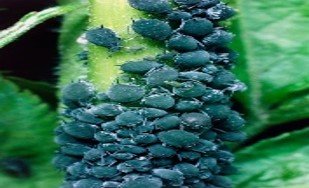 | They don’t eat holes in the plant leaves, but pierce leaves and stems, sucking the juices from the plants. | Lifeline + Traps + Meta + BT |
| Thrips | 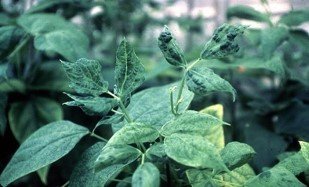 | They suck the juices from bean plants. If they appear while beans are flowering, the beans can fail to pollinate or the resulting pods may be deformed. | Lifeline + Traps + Meta + BT |
| Caterpillars | 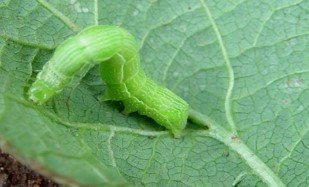 | Corn earworms and cabbage loopers, both insect pests eat beans. These pests are most troublesome in late-planted crops and can quickly decimate an entire row of bean plants. | Meta + BT |
| Anthracnose |  | This appears on all aboveground parts of the plant. Lesions are dark brown and may contain pink spore masses during moist weather. | Indofa |
| Bacterial Blight |  | Small, Water-soaked spots on plant leaves become red-brown. Spot centers dry out, turn grey, and can fall away. | Indofa + Bacillus |
| Pod Borer | 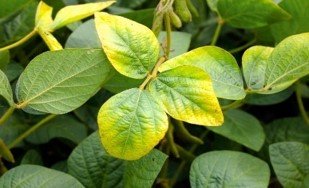 | Pod borers are caterpillars that feed on bean plants and damage the buds, flowers, and pods. | Traps + Meta + BT |
| Spider mites |  | Spider mites are tiny pests that can cause damage to bean plants by sucking their juices and making them pale, silvery, or brown. | Lifeline + Traps + Meta + BT |
| Leaf miners |  | Yellow, squiggly lines in the leaves. Spots or blotches of different colors. Frass, or droppings, inside the mines. | Lifeline + Traps + Meta + BT |
| Rust | 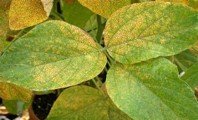 | Bean diseases can occur on most aerial parts of bean plants but are most often observed on the leaves. | BT + Bacillus Subtilis |
| Damping-Off | 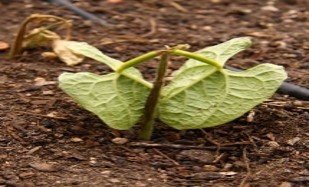 | Discoloration and rot of young stems near the soil line. Poor germination or the emergence of seeds. Wilting or collapse of seedlings. | Indofa + Bacillus |
NUTRITION DEFICIENCY IN PADDY CROP
| NUTRIENT | IDENTIFICATION | SYMPTOMS | SUGGESTED PRODUCT |
|---|---|---|---|
| Nitrogen | 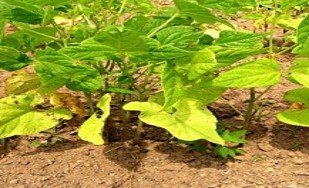 | Older leaves are pale green to yellow; stunted plants with few flowers and poorly filled pods. | Rhizo Caps |
| Phosphorus | 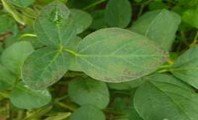 | Slow growth; small dark green leaves in the upper part of the plant; older leaves yellow then turn brown and senesce. Stunted plants with thin stems and short internodes. Flowers abort. | PSB Plus |
| Potash |  | Symptoms mainly in young plants. Marginal chlorosis of older leaves which turns to yellow-brown scorch in between the veins. | Potash Grow |
| Iron | 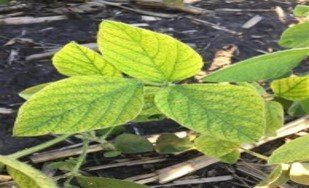 | Interveinal chlorosis, which means the leaves turn yellow while the veins stay green. Reduced growth and lower yield of beans. | ALP |
| Manganese |  | Interveinal chlorosis (i.e., yellowing). | ALP |
| Zinc |  | Deformed, pale green younger leaves with yellow tips and margins, interveinal chlorosis, and development of necrotic areas with time; blossoms and pods may abort; dwarfed plants. | Zinc Grow Caps |
| Sulphur | 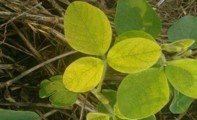 | Uniform yellow chlorosis of leaves, similar to N deficiency. | Sulphur Caps |
KEY FARMING POINTS
KEY FARMING POINTS
- SOIL TYPE = Well-drained soil with normal fertility. Soil that does not need supplemental fertilizer because beans fix their own nitrogen in the soil. Soil that is enriched with organic matter such as compost or manure
- SOIL PH = 0 – 7.0
- CLIMATE / TEMPERATURE = Beans are a warm-season crop that grows well at temperatures ranging from 15°C to 27°C. They can withstand temperatures up to 29.5°C, but they dislike hot conditions above 30°C, which can cause flower and pod drop. They also need protection from frost, which can damage the flowers, pods, and branches.
- SEASON OF PLANTING = In India, the best season for planting Indian beans is in the monsoon, from July to August. They will flower from November to December and are ready for harvesting from January to February.
- SPACING = Indian beansshould be spaced 30 cm apart in rows 60 cm apart. Plant your beans at least 3 cm deep.
- MANURING & FERTILIZATION = Fertilizer requirements depend on the fertility or quality of the soil.
- WATER MANAGEMENT = Water management in bean crops is important to avoid water stress and optimize yield. The water use rates of beans fluctuate on a daily basis depending on the temperature and crop stage.
- CROP DURATION = The crop duration of beans varies depending on the varietyand climate. The early varieties require 70 to 90 days to mature while the late varieties need 120 to 150 days.
- HARVESTING = Beans are ready for picking as early as 50 to 65 days after planting.
- YIELD = The yield of beans depends on the production system, variety, and environmental factors. The average yield of beans is 25 tons (250kg) per acre, despite the potential yield of 700 to 1500kg/ acredepending on the variety


